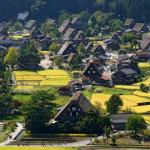What plants to plant in the sun. The most beautiful drought-resistant flowers for a flower bed
In the country, you can do without some frills, but without a bright, sunny, creating positive mood flowerbeds country life will lose its main zest. When creating solar beds, it is necessary to ensure that each of the plants receives its share of light. It is very important to combine plants correctly, selecting them according to their growth. Then tall specimens will effectively rise above undersized crops, creating a winning background for them.
Bright, light, equipped with unique silk petals, similar to the clothes of oriental sultans, Turkish poppy (Papaver orientale) will perfectly complement any sunny flower bed. Its surroundings can be sustained not only in scarlet or purple tones, poppies go well with flowers that have a white or yellow color. The exotic beauty makes the poppy a very popular plant for flower beds. But not only she. This is the most unpretentious plant. If the poppy gets enough sunlight, then it can grow for years without a transplant and on any soil.
Turkish poppy is a perennial, its straight bristly stem can reach a height of 80-100 cm. Basal poppy leaves are large, pinnately dissected, up to 30 cm in length, stem leaves are smaller. Single flowers up to 18 cm in diameter are fiery red and black spot at the base
Poppies can be not only scarlet, there are garden forms with orange, pink and even white petals. There is a special terry variety of plants of this species, which have bright red drooping flowers. This plant blooms in late May and early June, after which it is better to remove its yellowing leaves. Holes in the flower bed should be covered with asters that bloom in autumn. And the poppy at this time forms a small rosette of leaves, which will have to winter. The poppy can be accompanied by yarrow and oregano.
The unique aroma of blooming lavender
An excellent frame for a bright sunny flower bed will be created by lavender (Lavandula) - not only an ornamental, but also a medicinal aromatic plant. Those who have managed to see lavender at its peak of bloom will never be able to refuse its attractive fresh aroma and delicate purple flowers. Lavender bloom is a stunning sight, especially if its plantings occupy large area. This small perennial is always ready to cover borders and borders. Evergreen lavender is a bush with narrow leaves that have a delicate silver hue. Its inflorescence has the shape of an ear.
Butterflies with bees are very fond of the aroma emitted by honey lavender. The plant is unpretentious, it is drought-resistant and its cultivation in regions with warm and long summers is not particularly difficult.
Lavender flowers can be not only purple (from pale lilac to deep purple), but also pink, blue and even white. The purple variety of lavender is often combined with bright "sun-lovers" of positive yellow or orange coloring. If the composition is framed by lavender, it looks wonderful, for example, echinacea purpurea. The time of flowering depends on the type of lavender. Some varieties bloom from May to July. At the end of summer, they may have a second phase of flowering. Usually the plant does not live longer than ten years, so you should prepare a replacement for it in advance.
The Latin word "lava" means "to wash". The plant got its name for its antiseptic and hygienic properties. Even in ancient Rome, lavender was used during washing, cleaning and washing.
Unforgettable thin-leaved peony
In the 60s, this plant could be seen in many city flower beds. And now, after so many years, the thin-leaved peony (Paeonia tenuifolia) is again at the peak of popularity. Voronets, and this is how this plant is called in Russia, most often blooms in early May. Usually, by the May holidays, he already pleases everyone with his blood-red inflorescences. Its gentle fragrance is pleasantly woven into the spring breeze and spreads far around the area. Once in nature, these flowers could be found in whole blooming meadows, and today they are listed in the Red Book.
However, as a garden plant, the fine-leaved peony is quite common. In adulthood, the crow bush grows by 30-50 cm. Usually it is richly decorated with flowering shoots. Flowers bloom very amicably, so during the flowering period it is very beautiful and fragrant. Unfortunately, this period is not so long. Already in June it will be completed, especially in hot weather. But graceful greenery will remain with us until autumn. Often thin-leaved peonies are planted together with Carpathian bells, monards, knifofia, gelenium, blue-gray carnation, rudbeckia and bright coreopsis.
Material about other varieties of peony and how to grow them will also be useful:
You can, of course, dwell on the usual terry forms, they are also interesting in their own way, but this variety of peony is especially attracted to its greenery. It is good both with a flower and as a general background for plants that will be shorter than a peony.
Purslane - a colorful rug in your country house
The name of the purslane (Portúlaca olerácea) comes from Latin word"portula", meaning "gate". Where is the collar in this plant? It turns out that its seed pod swings open as if a small gate opens, opening the way for future rugs. After all, the people call purslane like that - rugs. Today, in some European countries, it propagates by self-sowing and grows as a field weed. Purslane conquered our gardeners with its tenderness and naive, unpretentious beauty. He welcome guest on every flowerbed. It is loved for its long and abundant flowering from June to August.
In the Middle Ages, it was grown by the Arabs, calling the purslane "blessed plant." It was believed that he was able to cure all diseases. Purslane was also in demand in the time of Hippocrates. Severe wounds and snake bites were treated with purslane leaves and flowers.
Most often, purslane is used as a border plant and on Alpine rollercoaster. It has small cylindrical fleshy leaves of green or slightly reddish color. Flowers with a diameter of 2.5-3 cm have a variety of colors: yellow, red, purple, pink, orange, etc. Plants with terry ("Double Mix"), white ("White-flowered"), purple ("Splendens") flowers attract the attention of specialists. There are even those in which the corollas are painted in two colors.
Colorful and elegant chamomile
Can grow many exotic plants, but if there is no common chamomile (Leucanthemum vulgare Lam) in your garden, then who will smile so joyfully at the sun in the morning? And who will answer our main question about love and not love? No, you can't do without chamomile. Especially in the presence of Turkish poppy and blue cornflower, chamomile creates a field color that will pleasantly refresh the site, make it dear to the heart and pleasing to the eye. Wood mallow, chamomile aster, scabiosa, yarrow, bluebell and meadow sage are perfectly combined with common daisy (chamomile).
This plant is often used in folk medicine. However, it is haphazard to use it, like any other medicines, not worth it
In fact, a white chamomile flower will always find itself nice neighborhood. Chamomile is a perennial that can be 15 and 80 cm high. Its stem can be branched or simple single. Chamomile inflorescence has the shape of a basket. The plant blooms in June-September. This plant reproduces not only by seeds, which each specimen produces in the amount of 2-5 thousand pieces, but also by vegetative means. Chamomile can overwinter in the form of a rosette, and on next year it already has flower-bearing stems.
Shaggy and fragrant Monarda
If you know a lot about good drinks, then try adding just one leaf of Monarda (Monarda) to a cup of any tea, and you will suddenly feel the exquisite aftertaste of Earl Gray. Experts say that this plant is able to invigorate the space just by its presence. Monarda is a “hooligan” among “intelligent” flowers with neat hairstyles. Her tousled hair, however, is always appropriate. She herself will not get lost against the background of other plants, but she will not allow herself to drown out anyone.
Monarda flowers can be double and simple. All species of this plant have an exceptional aroma, which exude not only flowers and leaves, but also stems and even rhizomes. "Shaggy" flowers of lilac, crimson, pink, red and even white appear in July. Abundant flowering does not stop until the very end of summer.
Monarda reaches a height of 120 cm. There is also a dwarf form that does not grow more than 20-30 cm. The leaves of the plant can be smooth or rough, depending on the variety
Helenium multiplying the sun
When helenium (Helenium autumnale) blooms, it seems that the autumn sun has multiplied and turned to you with many inflorescences. I really want to bend down to these flowers to smell them. The plant is very diverse. There are many different varieties of gelenium, which differ not only in the variety of colors, but also in the height and diameter of the inflorescence basket. The average flower diameter is 4 cm. As for the color, the gelenium can be yellow, bright red, yellow-orange, red or bronze with a contrasting dark flower core.
This plant is very well combined with others, so picking up a company for Helenium is not a problem. It looks especially good with rudbeckia and echinacea. Often, it is his flowers that replace traditional asters and gladioli in bouquets that are given to teachers on Knowledge Day
Gelenium blooms in August-September. It pleases with its bright flowering right up to the frost. In autumn, when the helenium stem dies, its root dies with it. But why then is this plant considered a perennial? It turns out that by the end of the growing season, a bud is formed at the very base of the stem, from which a small new rosette with roots and leaves develops. She will give a new flower-bearing stalk in the spring. What seemed to us a single flower, in fact, turned into a whole colony of independent plants.
Exotic African Knifofia
To see exotics and enjoy their flowering, today there is no need to go somewhere far away. Knifofia is another African-born sun lover who has taken root with us. This herbaceous perennial is incredibly attractive during its flowering period. From the very center of the deciduous rosette, a tall stem suddenly appears, devoid of leaves, decorated with a spike-shaped inflorescence. The buds begin to bloom gradually, either from top to bottom or from bottom to top. And soon the whole inflorescence turns into a large two-color cone.
When planting a bookworm, please be patient. There will be no flowering in the first year: the plant gives the first flowers in the second or even in the third year. But your expectation will be justified
However, even without flowers, this plant looks very exotic. It will become an undoubted decoration of any flower bed or an excellent backdrop for shorter sun-lovers. Its flowering continues from mid-summer until October. Knifofia can become the center of your flower bed, because it reaches a height of 120 cm. The plant will easily “make friends” with echinacea, stonecrop, yarrow and others.
Material about other varieties of tall flowers for garden decoration will also be useful:
Lush balls of garden chrysanthemums
Have you heard something about autumn depression and really want to feel what it is? Then expel garden chrysanthemums from your site! After all, they will not let you get bored even on a rainy October day. Beautiful garden chrysanthemums (Chrysanthemum) are a real classic summer cottages. The generic name of chrysanthemums consists of two Greek words. The first "chrysos" means gold, and the second "anthos" means a flower. It's hard to argue, these are really golden flowers.
There are 650 different varieties garden chrysanthemums, which are divided by type of inflorescence into 13 groups. Among the shrubs there are cirrus, bristly, blanket, semi-double, anemone, spoon-shaped and chrysanthemums - fantasy with elongated petals
It is impossible not to feel a quiet peace in your soul when this plant smiles with its lush heads to the cooling autumn sun. Stonecrop or shrub asters will gladly share their company. Together they will delight you with the rich colors of autumn. And you will say goodbye to your blooming garden until the new summer season, enjoying the tart, slightly bitter and cold aroma of chrysanthemums.
Those who want to decorate their plot with chrysanthemums need to know that flowers that have the same name are very different in the shape of the bushes, in height, size of flowers, type of inflorescences, degree of doubleness, color, and even in their flowering time. If the height of some of them does not exceed 35-40 cm, then others can grow up to 1.5 meters. very diverse and in color: white, pink, yellow, red, burgundy, sunny red and even green. Moreover, shades of the same color are represented very widely.
A flower born from a star
Once the Greeks decided that asters (Aster) appeared from a speck of dust that fell from a star. Therefore, they named this flower in honor of his mother - the star. Indeed, asters with their shape and radiant petals, which diverge in all directions, resemble stars. It is impossible not to mention this sun-loving queen of the garden.
Perennial varietal asters are able to surprise with abundant flowering and variety in colors. Among the asters there are lilac, purple, purple, crimson, blue, blue, pink and, of course, white specimens. Every flower lover will find those that will suit his taste. Tall goldenrod will receive a winning frame in the form of lilac or blue perennial asters. Together they will look very impressive. And with a lining of pink colchicum, you get a flower bed that will delight you with freshness and beauty right up to the first snow.
The beauty of the aster manifests itself precisely when the gardening season comes to an end. That's when the cold-resistant asters bloom in all the splendor of their unearthly beauty.
Thanks to the variety of asters, it is very easy to combine. For example, pink varieties look great next to Japanese spirea. White asters will successfully complement the purple stonecrops "Purple Emperor" or "Madonna"
The solar flower bed that you get will be first created by your imagination, and then by your own hands. Forming it, we hope you will not forget about the plants to which we have dedicated this article. Let it not contain specific recommendations for planting and care. Our goal is to show you these plants, and you will select them for your garden and learn more about them yourself.
Perennials for sunny areas
Under the sun's rays, perennials bloom with special splendor and beauty.
The choice of their species and varieties is large enough so that every gardener can find plants of the color, shape and flowering period that suit him.
The most successful places for many profusely flowering garden perennials- open to the sun.
Here such noble long-flowers as lilies, peonies and phloxes can show themselves in all their glory.
They tolerate short-term daytime shade quite calmly, but longer shading and even openwork shade from trees and shrubs seriously affect their prosperity.
Particularly sensitive in this regard are large, luxuriant breeding varieties of sun-loving perennials.
For them, the most optimal rabatki with fertile and sufficiently moist soils.
The design of sunny areas depends entirely on your taste and, of course, on real opportunities your garden.
Small flower beds in the front garden can be arranged no less effectively than a ridge stretched along the garden path, a "ribbon" of perennials along the border of the garden, or a flower island in the center of the lawn.
In any case, it is very important to skillfully combine plants according to growth.
Such tall and luxuriant crops as krasodnev, mallow and lupine, most advantageous in the "far" section of the flower bed. Their flower stalks will rise above the shorter crops in the foreground, which in turn will cover the bases of their shoots.
For a beautiful transition between open to the sun compact cushion perennials - shrubby aster, gray carnation or Carpathian bluebell.
They will reliably cover the soil with a dense leafy cover, which will decorate the edges of the rabatok at the time when flowering ends.
The most important advantage of sun-loving perennials is a colorful outfit.
Their multi-color arrangement looks best against a calm background of trees and shrubs.
In order to achieve certain color combinations, it is necessary to take into account the periodicity of the development of each individual culture.
The peak of flowering perennials falls on the period from June to August. At this time, such large yellow-colored "sun worshipers" bloom magnificently, such as rudbeckia, heliopsis, coreopsis, gelenium, as well as juicy red monarda and knifofiya.
Calm white and blue notes bring this color different kinds and varieties bell and spur (delphinium) .
|
|
|
|
|
|
|
|
|
|
|
|
|
|
|
|
You can extend the flowering season on the sun bed with attractive fall-blooming crops such as stonecrop, garden chrysanthemum or autumn asters .
Most perennials will re-bloom in the fall if pruned after the main flowering period.
Such plants include delphinium, stenaktis, iscabiosis catnip.
The choice of spring sun-loving perennials is somewhat less.
Bloom in April rezuha, backache meadow and adonis.
Join them in May daylily, catnip and peony.
You can enrich the spring palette with such bulbous ones as narcissus, tulip and hazel grouse.
Since bulbous crops become unattractive after flowering, they should not be planted in the foreground of flower beds.
An easier-to-care-for large flower garden option is a sunny lawn.
wild perennials - nivyanik, yarrow, meadow sage - thrive here in a motley company with herbaceous plants.
Such lawns are sown with a special seed mixture or planted individual cultures on an existing lawn.
|
|
|
|
|
|
|
|
|
|
|
|
|
|
|
Rabatka from sun-loving perennials
Soft and delicate colors dominate this perennial discount.

1. Miscanthus - Miscanthus sinensis.
2. One-year-old three-incised, or hole - Malope trifida.
3. A hybrid variety of yarrow - Achillea "Schwefelbluete".
4. Bell flower - Campanula lactiflora.
5. Perovskia wormwood - Perovskia abrotanoides.
6. One-year verbena hybrid - Verbena.
7. Stonecrop-skripun, or hare cabbage - Sedum telephium (before flowering).
8. Decorative round-headed bow - Allium sphaerocephalon.
9. Fox-tailed peristoschetinnik - Pennisetum alopecuroides (before the appearance of peduncles).
10. Wormwood Louis - Artemisia ludoviciana.
11. Hybrid variety of yarrow - Achillea "Lachsschoenheit".
12. Hybrid shrub aster - Aster dumosus (before flowering).
13. Hybrid coreopsis - Coreopsis.
14. Fassen's catnip - Nepeta fassenii "Six Hills Giant".
15. Himalayan geranium - Geranium himalayense.
16. Annual fragrant tobacco - Nicotiana.
17. Santolina cypress - Santolina chamaecyparissus.
Examples of compositions from sun-loving perennials
|
Cascades of flowers Thanks to well thought out planting, the geranium, sedum and mantle get as much sunlight as the tall wood mallow (Malva sylvestris) in the background. |
Warm colors of autumn Delicate and soft palette of purple echinacea (Echinacea purpurea), gelenium hybrids (Helenium) and chamomile aster (Aster amellus) is simply amazing! |
sunbathing Daylily (Hemerocallis), Gaillardia (Gaillardia) and loosestrife (Lysimachia punctata) just glow in the sun. |
Beautiful sun-loving perennials
Delphinium - large-flowered perennial with long candle-shaped inflorescences; supports are desirable; re-flowering after pruning. Densely strewn with bells, upright flower stalks of the spur are spectacular in any corner of the garden.
Phlox paniculata - durable large-flowered perennial with dense pin-shaped peduncles; re-flowering after pruning. Pleasant aroma and lush floral attire make phlox one of the most popular garden crops.
- unpretentious large-flowered perennial with inflorescences-baskets; gives root suckers; pruning increases the flowering period. If enough space is provided for rudbeckia, then gradually it forms dense flower thickets.
- abundance of star-shaped inflorescences over dense dark green foliage; good groundcover. The warm lights of the autumn shrub aster (Aster dumosus) glow in the garden until October.
Kotovnik - long, arched shoots with numerous small two-lipped flowers; loose bushy growth. It is not difficult for him to find a company. Regular pruning keeps the bush compact.
Oriental poppy (Turkish) - large cup-shaped flowers of luminous color; short time flowering; spreads by self-seeding. He is loved for the freshness of bright flowers and for the expressiveness of the seed pods.
- hardy large-flowered perennial with sunflower-like inflorescences on long straight stems and long-lasting flowers.
Lavender - compact long-lived perennial with evergreen pubescent foliage and with fragrant flowers. Thanks to woody stems, lavender is classified as a semi-shrub. She is very good in borders.
Day-lily - large-flowered perennial with star-shaped or bell-shaped flowers; grows to the size of a large shrub.
Gaillardia - attractive multicolor ray-shaped inflorescences on strong stems; cold protection recommended.
Everyone can have a beautiful and colorful site, even not very experienced gardener. And even if it is not possible to provide daily watering and they need to be planted in an open, arid area, it does not matter. Consider some drought-tolerant plants as examples for planting in a sunny bed that will bloom, delight in lush greenery, and make your garden cozy.
drought tolerant herbs
When making a sunny flower bed, you should pay attention to which will help to complement your flower garden with juicy greenery and give it volume.
Examples of such drought-resistant plants:- meandering meadow- forms tussocks of thin blades of bright green color. It is not picky and tolerates frost well and is great for planting in an open area;

- tonkong gray- low drought-resistant grass of green-gray color, which is the reason for its name. It takes root well in sunny areas and does not need any specific care;

- reed canary Grows well in both sunny and shady areas. His main feature- white leaves

- - an excellent plant that absolutely does not need watering and loves sunny places. There are many varieties of tenacity, which differ in a variety of colors.

- In April-May, you can land cornflowers. They prefer sunny places and are unpretentious to soils. These perennials must be planted at least 30 cm apart, otherwise the plants will shade each other. Cornflower does not require special care after planting and resistant to pests and diseases. In order to keep your sunbed looking tidy, you need to remove flowers that have faded.
Did you know? Cornflowers are perennials that are widely used in classical medicine. They are part of antiseptics and preparations for the treatment of diseases of the eyes, liver and biliary tract. In folk medicine, inflorescences are used to make various tinctures that help in cosmetology and even gynecology.

- Sunny mood in your flower bed will create doronicum. While the rest of the plants are only gaining strength, and the bulbs have already faded, doronicum will delight you from May to June. More than 40 species of this plant are known. The flower adapts perfectly to any conditions, so a sunny flower bed is perfect for planting it. When leaving, it must be taken into account that the plant has a superficial root system, and weed and loosen the soil with care so as not to damage the perennial.

- Lush and bright, which are also planted during this period, are not only unpretentious, but also bloom twice: in June-July and August-September. You can plant them either one at a time or in groups of 2-3 plants, in which case in a couple of years you will get powerful root system This plant is very strong and goes to a depth of 1 meter. It should be borne in mind that the seeds of this perennial are poisonous and it is necessary to cut the flower stalks in time. But the stems of faded lupine will be perfect for your flower bed.

- The list of colors that are great for an open sunny bed includes small-petal blooming throughout the summer. This plant is deservedly preferred by novice gardeners and designers. Indeed, when choosing this perennial, you get fluffy green bushes that also bloom profusely. Small-scale frost-resistant, not capricious and sun-loving perennial.

- You can also land at the end of May. This is a herbaceous plant with bright colors has about 90 species, it can be both upright and ampelous. The plant does not require special care, but during flowering it is desirable to provide moderate watering. And, of course, to maintain the well-groomedness of your flower bed, dried flower stalks should be removed.

-
It has many colors and is perfect for a sunny flower bed. In addition to the abundance of colors, it also has a pleasant aroma. All varieties of cloves go well with other plants in the flower bed, not capricious to the neighborhood.

Sun-loving flowers for the flower bed
In nature, there are a lot of plants that we can plant in a sunny flower bed. And in the search for drought-resistant flowers for a flower bed, we advise you to pay attention to those that do not need to be sown every year. Another plus in favor of perennials is the factor that they are quite unpretentious and do not need special care.
Drought-resistant flowers for flower beds - the best option for growing on sunny area in the southern regions. Such heat-resistant and dry-resistant decorative leafy and beautifully flowering plants great for dry places in areas characterized by high temperatures and insufficient rainfall.
Drought-resistant plants: general characteristics and care features
Any garden and houseplants, as well as decorative perennials and shrubs that can live in conditions characterized by a pronounced lack of water and are very drought resistant - xerophytes. The most famous subgroups of such plants are represented by:
- plants avoiding soil aridity or ephemera. They have the shortest growing season, which coincides with the period of active natural precipitation;

- plants that actively store moisture or false xerophytes. The names of representatives of this subgroup are known as succulents, which have thick and fleshy stems or leaves;

- plants, with a very well developed adaptability to extracting moisture with the help of a highly branched root system;

- plants that grow in dry areas and tolerate a lack of moisture in a state of suspended animation. Such sclerophytes are characterized by a relatively low water content.
Plants for sandy soils (video)
The natural area in which xerophytes grow under natural conditions can be different. It can be perennial crops, trees and all kinds of shrubs, as well as cereals and various annuals. To choose which drought-resistant plants are most suitable for decorating a garden, you need to familiarize yourself with their characteristics and cultivation features.
Beautiful drought-resistant flowers for a flower bed in a sunny area
Abundantly blooming and very beautiful flowers for flower beds can also have sufficient drought tolerance., and the background for them is most often green ground cover crops or grass.
| Name | Characteristic |
| Kariopter | In early spring forms bright foliage. In the last decade of summer, paniculate inflorescences of blue, blue or white bloom. The above-ground part is compact, up to one and a half meters high. AT autumn period Leaves turn brown, green and yellow |
| Montbrecia | Bulbous iris culture up to one and a half meters high. Presented large quantity varieties, which allows you to get a long flowering throughout the summer and until mid-autumn. The flowers have various yellow and red shades. |
| Decorative annual, characterized by a variety of coloring and flower shapes. The height of the above-ground part does not exceed a meter |
|
| gaillardia | Srednerosly annual, belonging to the family Asteraceae. The height of the aerial part does not exceed 50 cm. The flowers are yellow or reddish-brown. |
| Campanula | The height of the plant does not exceed half a meter. Herbaceous perennial forms purple, blue or white attractive flowers |
| garden chamomile | Produces relatively large white flowers. Perennial belongs to the category of aggressive plants, therefore, it is required to strictly observe agricultural technology, which will prevent excessive spread over the site |
| It forms peculiar rosettes, assembled from relatively short and thick leaves of rich green or dark purple color. In July, a stem with a large flower is formed. |
|
| Carnation | The culture is characterized by a rich choice of variety forms and coloration. After flowering, it needs pruning of the stems, which will allow you to get abundant and lush, long flowering. |
| Marigold | Differs in an abundance of variety forms. The aerial part is compact, and flowering is plentiful, from mid-summer to the onset of a strong autumn cooling. |
| Calendula | Popular ornamental plant herbaceous type, belonging to the aster family. Widely used in folk and official medicine. Characterized by bright yellow or orange flowers |
Ornamental non-flowering plants and herbs for dry areas

| Name | Characteristic |
| Byzantine chistets | The original texture allowed the Byzantine Chistets to be called "lamb's ears", due to the whitish-silvery foliage with an attractive velvety texture. |
| gray fescue | compact bushy undersized plant reminiscent of appearance sea urchin with characteristic needle-shaped leaves of bluish coloration |
| two-source | Belongs to the rapidly growing ornamental cereal crops, forming a relatively high cushion-shaped aerial part in the form of a whitish-green grass |
| A rapidly growing and aggressive highly decorative elimus requires compliance with agricultural practices and limiting distribution by arranging the root system in permeable containers |
|
| meadow foxtail | perennial culture characterized by very attractive golden foliage and the formation of silky spikelets |
| bulbous ryegrass | A perennial herb with attractive whitish-green foliage and a compact aerial part. |
| meandering meadow | Slow-growing and fairly unpretentious culture with thin, hairy foliage of bright wheat coloring. |
| sedge kyliomarginata | small size, a compact and unpretentious plant with a wide decorative foliage, retaining its attractiveness until the onset of severe cooling |
| Peristoschaetin | A perennial crop with an aerial part no more than a meter high, unpretentious in care and undemanding to the soil composition in the growing area |
| A steppe variety that prefers slightly alkaline soils and does not tolerate frequent transplants or excessive moisture. The feather grass is suitable for group plantings |
|
| Barley high | Not more than one and a half meters high, with flat, juicy green leaves. Unpretentious, suitable for growing on any type of soil, a variety that remains attractive throughout the season |
| Pennisetum gray | Annual favorably differing in unusual bronze-burgundy coloring of foliage. A fast-growing culture up to one and a half meters high is perfect for group plantings and as a single plant |
| Miscanthus sinensis | One of the most popular and widespread cereals in home gardening with attractive paniculate inflorescences and hard lanceolate leaves |
Drought tolerant trees and shrubs
Such cultures successfully combine unpretentiousness in care, undemanding to growing conditions and pronounced external attractiveness.

| Name | Characteristic | Usage |
| A slow growing shrub with attractive leaves and purple, white or pink colored flowers. Decorates the garden space throughout the season, until the onset of cold weather. Easily takes root on many types of soil and does not require much attention | In single and group plantings, creating hedges and near water bodies |
|
| Barberry | Evergreen attractive thorny shrub with flowers and red edible berries. Bushes are used to create thorny thickets and live fences. The height and width of the variety can be one and a half to two meters. Perfectly tolerates formative pruning and retains high decorativeness until the onset of winter. The most popular in the backyard landscape are silver, dwarf and golden barberries. | Spectacular solitary plant, as a background for undersized crops |
| evergreen shrub drought tolerant plant, retaining the attractiveness of almost all year round. They do best in regions with dry and hot climatic conditions, but can also withstand short frosts with relative ease. | Spectacular tapeworm when filling lawns and decorating recreation areas |
|
| A drought-resistant shrub variety widely used for creating hedges, as well as dividing garden space into separate zones. Ideal for cultivation in soil and climatic conditions middle lane. The culture is represented by several dozen species and varieties | ||
| dwarf euonymus | A stunningly beautiful shrub often referred to as the flaming bush due to the unusual coloring of the foliage. Can be used to create low borders. Prefer enough fertile soils and is characterized by frost resistance sufficient for cultivation in many areas. | Solitary and group plantings, creation and design of hedges, rockeries and retaining walls |
| Juniper | Favorably differs in absolute undemanding to leaving and unusually beautiful appearance. It has evergreen flexible branches with tiny needles and scaly needles that spread a pleasant, characteristic aroma. | Great for decorating parks and recreation areas |
| An original shrubby variety that forms straight, unbranched trunks strewn with large thorns. The foliage is very large, twice or thrice pinnate. The flowers are small, whitish-cream in color, collected in a complex-paniculate type of inflorescence. | In single and group plantings, when creating impenetrable highly decorative hedges |
|
| Privet | Deciduous or evergreen shrub with berry-like fruits. It has not only drought resistance, but also frost resistance, unpretentiousness to different types soils, long-term preservation of decorative attractiveness | As a tapeworm, in group and border plantings, when creating hedges |
| Karagan | Deciduous shrub or small tree. It has stipules modified into styloid appendages or spines. Flowers of a typical moth type. The formation of pod fruits is characteristic. Frost-resistant, very photophilous and undemanding to the type of soil | Standard forms as tapeworm, when creating hedges |
| Snowberry | A deciduous shrub that produces spectacular large white or pink fruits that remain on the plant throughout the winter. Fast-growing culture unpretentious, photophilous, perfectly adapted for shearing and shaping | Tapeworms, in group plantings, in the design of hedges and borders |
Drought-resistant perennials and annuals: options for use in garden design
Ornamental cereals, flowering and drought-resistant shrub crops are great for decorating a garden space. Such unpretentious plants are able to grow well on any type of soil.
Cereals look very beautiful and original not only in single plantings, but can be a worthy addition to yarrow, catnip, goldenrod or rose bushes. Trees and shrubs serve as an excellent background, used in the design of group and single plantings. Blooming annuals and perennials are great for flower beds, flower beds, lawn and border decoration.
What drought-resistant flowers to decorate a flower garden (video)
Any drought-resistant varieties are ideal for decorating a garden space and different types flower beds. Such crops take root perfectly on almost any type of soil and are able to serve worthy decoration landscape of a personal or garden plot.






























